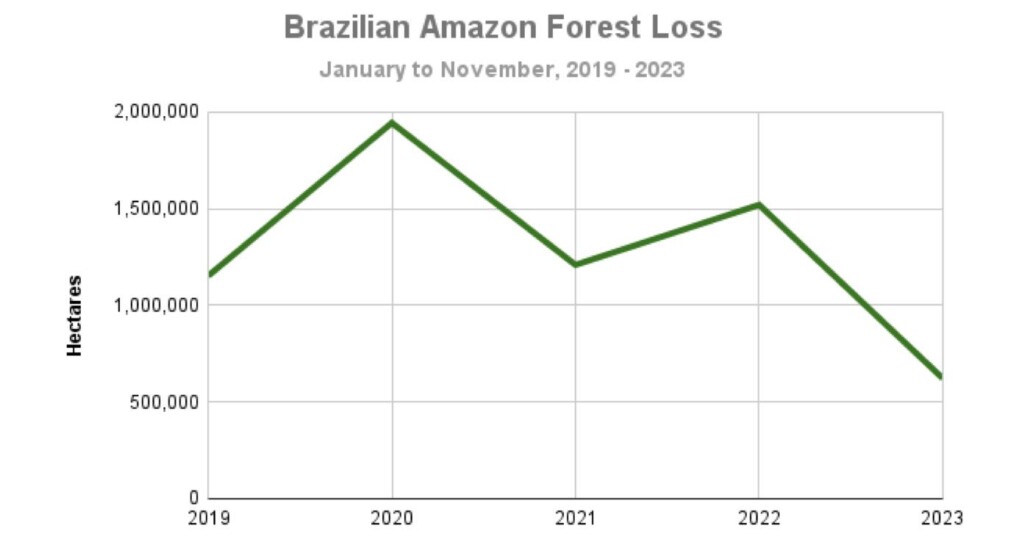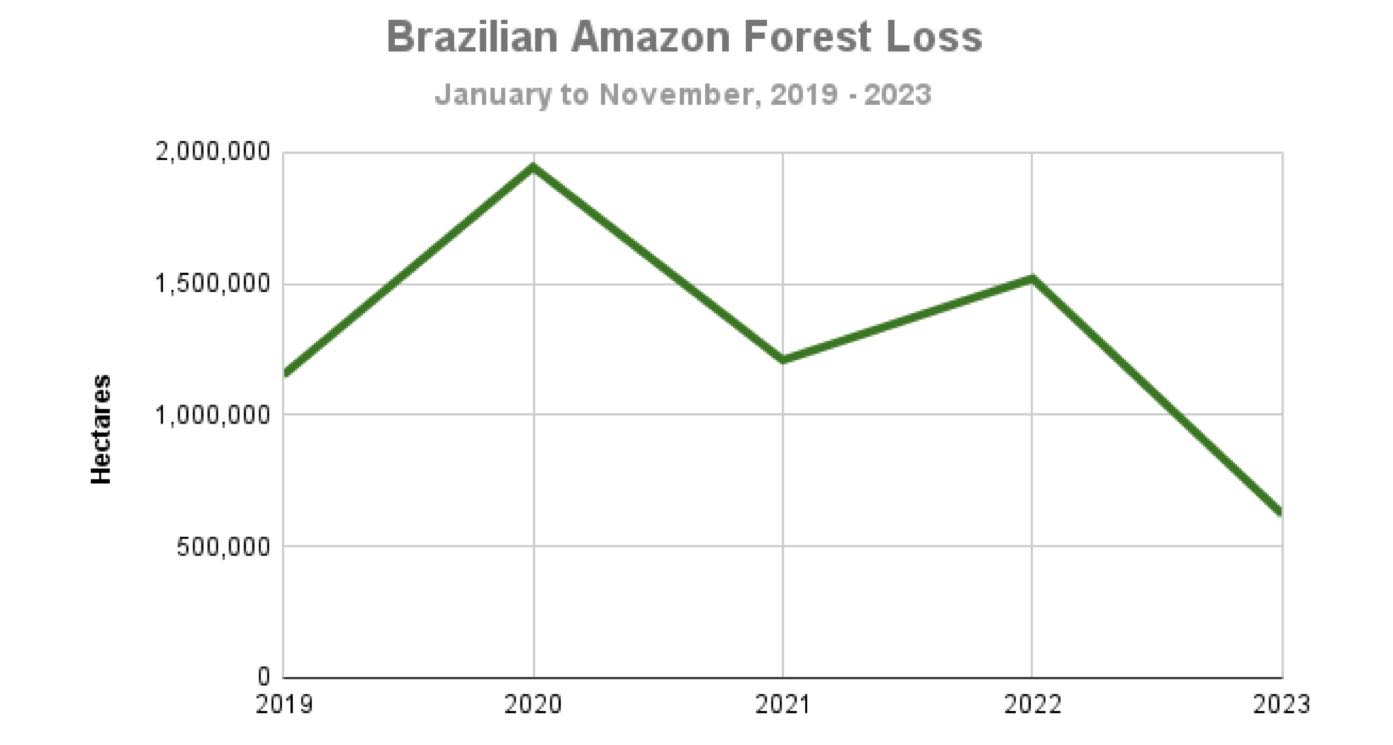
Deforestation across the Amazon Rainforest has fallen by 55% this year, marking the lowest amounts since 2019, and somewhat of a major victory to recently-elected leftist governments in Brazil and Colombia.
The data was provided to Reuters via the Monitoring of the Andean Amazon Project, which tracks forest cover and loss across all the nations of the Amazon using the European Space Agency’s Sentinel-2 satellite.
The data showed a 59% drop in primary forest loss in Brazil, which promisingly runs very close to the numbers provided by Brazil’s government under Luiz Ignacio de Silva, who ran on a part-environmental platform.
Peru’s forest loss decreased by one-third, and Colombia’s by two-thirds. Many former guerillas that control parts of the forest have begun working in environmental sectors, and Reuters believes this might be part of why deforestation fell so much in Colombia.
Bolivia also saw a drop in the rate of forest loss by 60% despite battling several severe wildfires.
Among countries that experienced increased rates of forest loss, (Venezuela, Suriname, and Guyana) MAAP says this is down to natural causes like floods, mudslides, and strong winds.
MORE POSITIVE TRENDS LIKE THIS: Loss of Climate-Crucial Mangrove Forests Has Slowed to Near-Negligible Amount Worldwide, Report Hails
Some scientists believe that the Amazon Rainforest’s capacity to absorb carbon dioxide is the Earth’s greatest tool to prevent climate change. Some rainforests, such as those in Costa Rica are theorized as being net-carbon sources rather than sinks because of the poor soil and rapid decomposition of biomass, but the Amazon hasn’t been studied in this way.
MAAP believes the deforestation data will allow the Amazonian countries to have a strong negotiating position for international conservation funding at the upcoming summit for the signatures of the Paris Agreement, or COP28.
SHARE This Super Positive Trend With Your Friends…




















